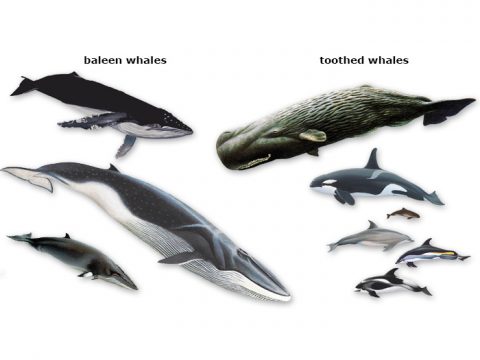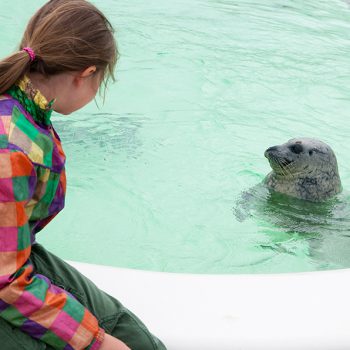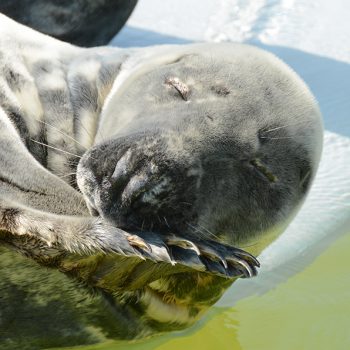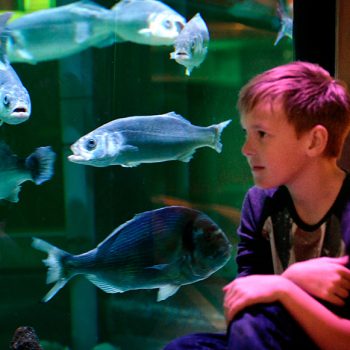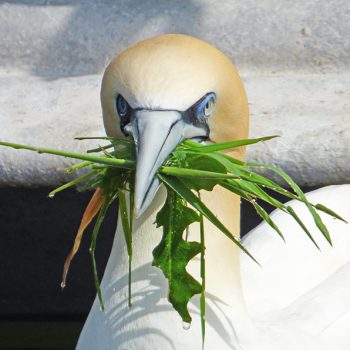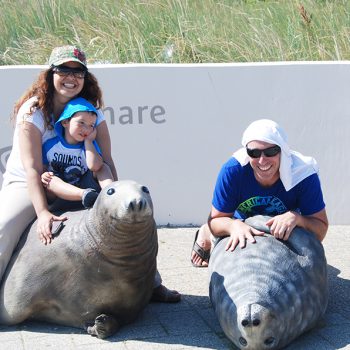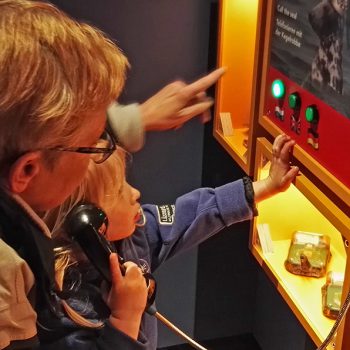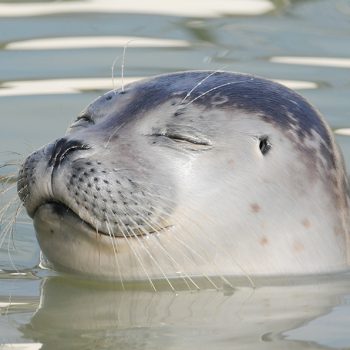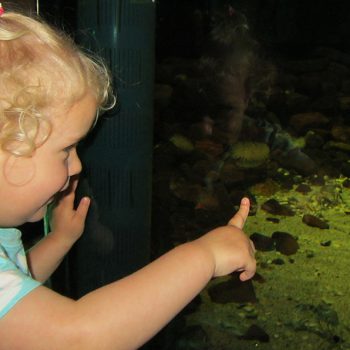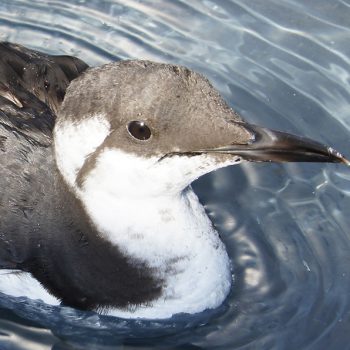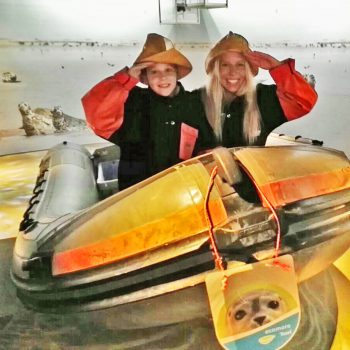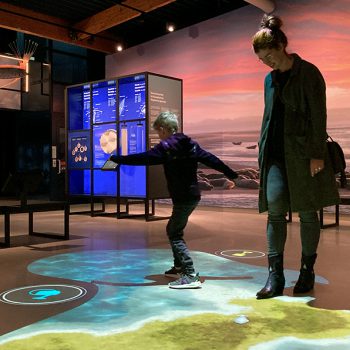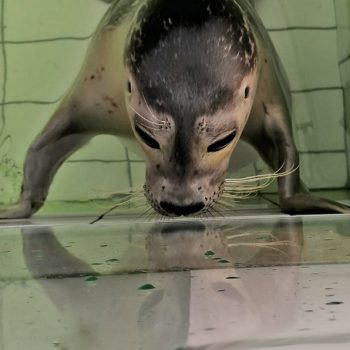Humpback whales are surely the happiest animals in the sea. Just watch their fantastic acrobatic somersaults as they jump high out of the water! You can recognize them easily by their large, somewhat clumsy body, long flippers, pockmarked flat head and typical fluked tail. Not necessarily what you would call mother’s little beauty, but still very majestic. Since 2003, humpbacks have been spotted more often in the southern North Sea. The first previous report was in 1755! Nowadays they are seen just about every year off of the Dutch beach, fishing along the coast as if they always were around.
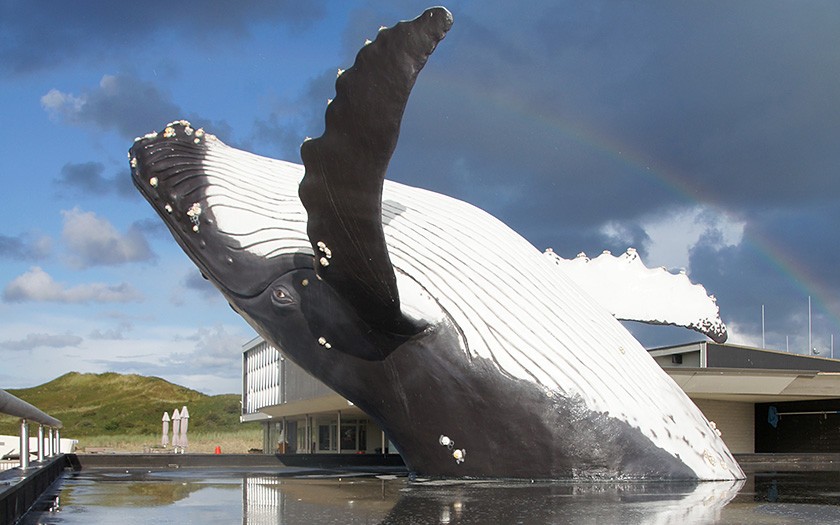
Distribution of humpbacks
Humbacks live in all oceans from pole to pole. They are usually found in deeper waters, but they also take risks by swimming closer to shore. Most humpbacks make long trips. They spend the summer in cold waters around the poles, where they eat krill. In the winter, they move to the tropics and sub-tropics to mate and calve. A female humpback holds the record, having covered a distance of at least 10,000 kilometers.
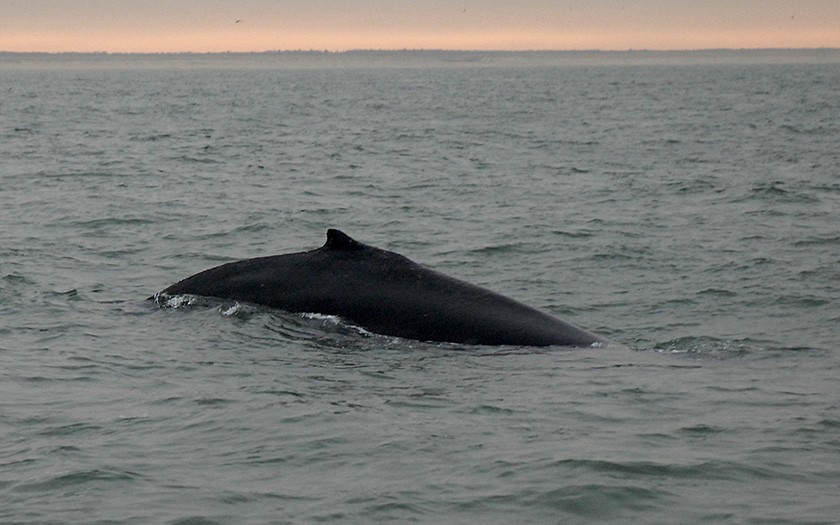
Fishing humbacks
Humpbacks usually filter their food out of the water using baleens. However, they also use their large mouth to shovel up schools of fish. They have an ingenious method for driving the fish together: they dive down under the fish, swimming in a circle while blowing bubbles. These bubbles form a circle around the fish. Sometimes, the whales work together to make a circle of air bubbles. They can also slap the water with their fins or tail to drive the fish together. The humpbacks dive down again under the fish, rising up with wide open mouths.
Humpbacks are marine crooners
Male humpbacks produce lovely songs. A humpback song can last as long as 45 minutes and can resonate for kilometers. The song consists of whistling, grunting, groaning, snorting and crying. The purpose is to attract a female or to mark off their territory.
First humpback in the North Sea
In 2003, a dead humpback whale floated in the mouth of the Nieuwe Waterweg. That caused a lot of consternation… this was the first time since 1755 that a humpback was found in the North Sea. The first time a humpback washed ashore on the Belgium coast was on 5 March 2006. It was a young female, 10.5 meters long. Cause of death was possibly a collision with a ship.
The fact that humpback whales are seen more often in the southern North Sea is probably related to global developments. The number of humpbacks in the oceans have increased remarkably thanks to the ban on hunting. Perhaps another less positive reason is a food shortage in other seas, forcing the humpbacks to forge new areas.
Whale watching in the Netherlands
In May 2007, the sea dike by Den Helder was covered with whale watchers. A humpback whale occasionally swam close to the dike. It was particularly spectacular because live humpbacks had never been seen before off the Dutch coast. A humpback was spotted again in 2009 but whale experts could see that it was a different animal. The photo above was taken on 9 January 2009, more than one kilometer off the coast of Texel, practically in Ecomare’s backyard! There were lots of young herring in the water at the time and the whale was hunting them. Since 2011, several humpbacks are spotted off the Dutch coast every year.
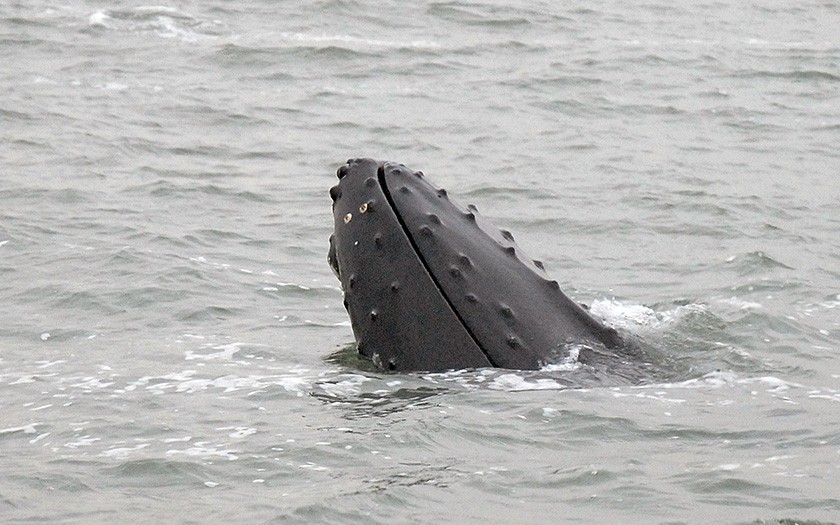
2004: stranding of a humpback on Vlieland
On Tuesday, 22 June 2004, a dead humpback whale stranded on the Vliehors, on the North Sea side of Vlieland. A nylon rope was wrapped around the head of the whale and cut deep into its body, probably the cause of death. It was a young male approximately 8 meters long.
The salvaging of the humpback on the Vliehors was quite a happening. Salvaging a whale is very costly. Not realizing that it concerned a rare whale (for the North Sea), the mayor of Vlieland had the animal buried under the sand within a few hours of its discovery. Fortunately, photos were taken first. After viewing the photos, experts at Ecomare determined it to be a humpback whale. The mayor gave them permission to salvage the body. Ecomare sent a cutting team to Vlieland the next day, along with taxidermist Chris Walen. The whale was dug up and dissected.
The Vlielanders saw the whale disappearing under their noses and were very indignant about the whole episode. That very same evening, a 15-meter long sperm whale washed up on the same beach, which helped to soften the blow. As of July 2005, this stranded sperm whale can be viewed in the visitor’s center De Noordwester on Vlieland.
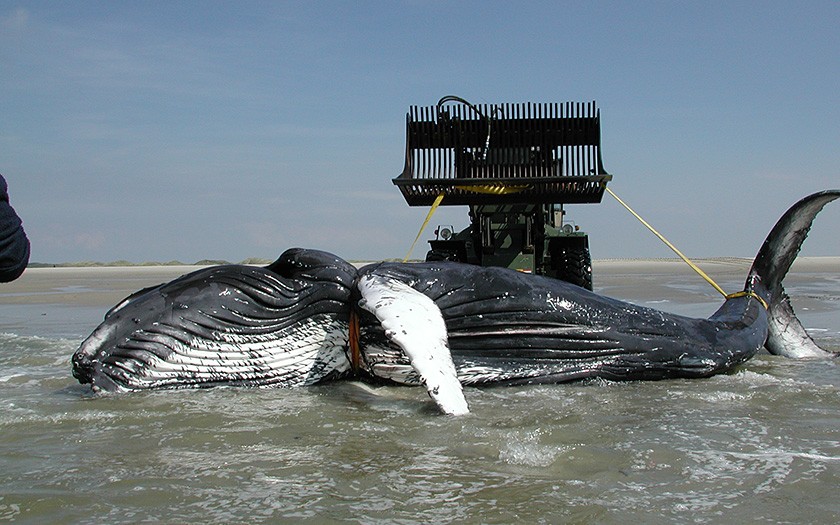
2012: live humpback on the Razende Bol
On December 12 2012, a live humpback whale stranded on the Razende Bol, an uninhabited sand island between Texel and Den Helder. It was a young female. Although she pulled free and swam further just after being reported, she beached again shortly afterwards. She landed on an elevated part of the sandbank, a difficult spot to reach far away from deep water. Many people sympathized with the animal, when it became clear that she couldn’t be rescued. To prevent more suffrage, the Ministry decided to put the humpback to sleep. However the substance didn’t work sufficiently. She ended up dying 1.5 days later on her own.
Because there was a major discussion concerning how long one should try to rescue a beached whale and how and when the animal should be put out of its misery, it was decided to make an official Dutch Beaching Protocol. It was published in 2013. When a live sperm whale stranded a few weeks later on Terschelling, it was put directly into effect. This whale did not survive, dying during the rescue operations.
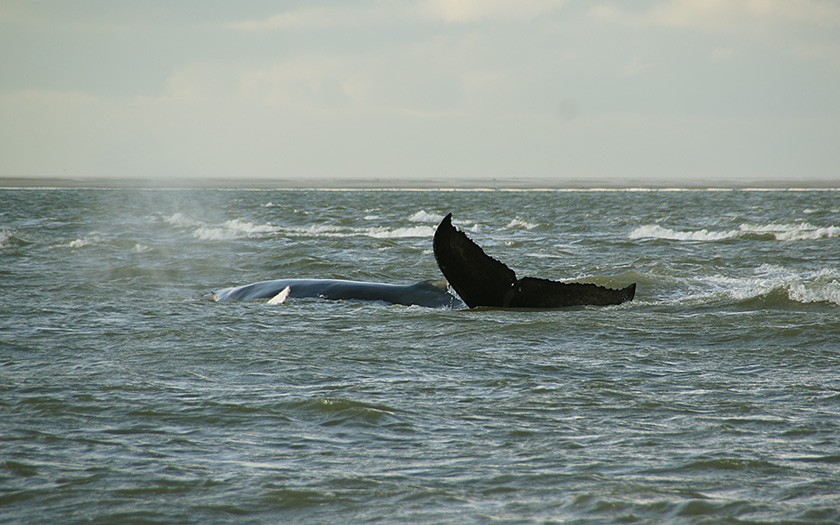
Facts about humpbacks
- size: up to 18 meters
at birth: 4-5 meters
- weight: up to 30,000 kilograms
at birth: around 2000 kilograms
- color: black back and light underside;
each individual has its own characteristic black-white spotted pattern on its tail, front fins and belly
- age: probably 40-50 years
- food: filter krill using baleens and hunts small fish
- movement:
diving: stays underwater an average of 10 minutes, maximum 45 minutes
speed: average 8 km per hour, maximum 27 km per hour
- enemies: man; loss of habitat, pollution, underwater noise, nets (entanglement) and ships (collisons)
- reproduction:
maturity: 4-7 years
frequency: 1 calf every 2-4 years
pregnancy: 11-12 months
nursing period: 6-12 months
Names
- Dut: Bultrug
- Lat Megaptera novaeangliae
- Eng: Humpback whale
- Fre: baleine à bosse
- Ger: Buckelwal
- Dan: Pukkelhval
